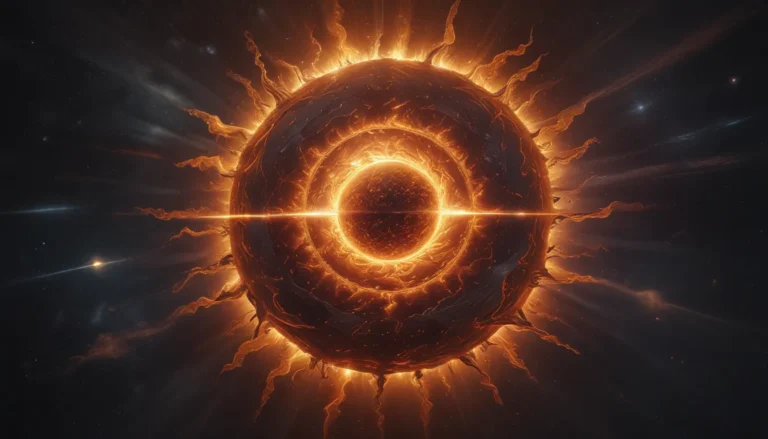The pictures we use in our articles might not show exactly what the words say. We choose these pictures to make you interested in reading more. The pictures work together with the words but don’t take their place. The words still tell you the important facts.
Have you ever pondered what lies between galaxies in the vast expanse of the universe? Intergalactic filaments, also known as cosmic webs, are the enigmatic answer to this intriguing question. These extraordinary structures serve as the backbone of the cosmos, intricately connecting clusters and superclusters of galaxies across unimaginable distances.
In this article, we will delve into 15 fascinating facts about intergalactic filaments that will leave you in awe of the elaborate cosmic architecture. From their immense size and mysterious origins to their pivotal role in shaping the distribution of matter in the universe, these filaments unveil the mesmerizing interconnectedness of the cosmos.
So, fasten your seatbelt and get ready for a mind-expanding journey through the universe as we unravel the secrets of intergalactic filaments.
Key Takeaways:
- Intergalactic filaments are akin to cosmic highways that link galaxies across the universe, playing a fundamental role in the formation and evolution of stars, galaxies, and even supermassive black holes.
- These colossal cosmic structures, molded by dark matter, are imperative for comprehending the large-scale structure of the universe and harbor clues to enigmas like dark energy and the early universe.
Filaments Are the Largest Structures in the Universe
Intergalactic filaments are vast cosmic structures composed of gas, dust, and dark matter, spanning millions of light-years and connecting galaxies across the expansive space.
Filaments Play a Crucial Role in the Cosmic Web
Forming an intricate network known as the cosmic web, intergalactic filaments act as the scaffolding of the universe's large-scale structure, providing channels for the flow of matter and energy between galaxies.
Filaments Contain a Variety of Cosmic Matter
These cosmic filaments host a diverse array of matter, from hot and diffuse gas to dark matter and traces of heavy elements, fueling the formation of stars and galaxies in the cosmic tapestry.
Filaments Are Shaped by Dark Matter
Dark matter exerts gravitational influence on the shape and distribution of intergalactic filaments, serving as the underlying framework for the cosmic web.
Filaments Are Hotbeds for Star Formation
Within dense regions of intergalactic filaments, gas and dust accumulate, creating ideal conditions for the birth of new stars and contributing to the continuous evolution of galaxies.
Filaments Act as Highways for Galaxies
Serving as cosmic highways, intergalactic filaments facilitate the movement of galaxies across the universe, with galaxies often aligning along these filaments, tracing the intricate web-like structure of the cosmos.
Filaments Can Span Hundreds of Millions of Light-Years
The awe-inspiring scale of intergalactic filaments is undeniable, stretching across mind-boggling distances, connecting galaxies separated by hundreds of millions of light-years.
Filaments Are Difficult to Detect Directly
Due to their extremely low density and diffuse nature, intergalactic filaments pose a challenge for direct detection, requiring advanced techniques and simulations for study by scientists.
Filaments Play a Role in the Distribution of Cosmic Background Radiation
The presence of intergalactic filaments influences the distribution of cosmic microwave background radiation, offering insights into the early universe and galaxy formation.
Filaments May Hold Clues to Dark Energy
Exploration of intergalactic filaments can shed light on dark energy, the mysterious force propelling the accelerated expansion of the universe, presenting a significant goal in modern cosmology.
Filaments Can Stretch for Billions of Light-Years
Some intergalactic filaments extend for billions of light-years, showcasing the vastness and complexity of the universe and the colossal structures within it.
Filaments Are Essential for the Growth of Supermassive Black Holes
Intergalactic filaments channel vast amounts of matter into galaxy cores, fueling the growth of supermassive black holes at their centers and playing a pivotal role in galaxy evolution.
Filamentary Structures Are Traced by Galaxies’ Distribution
Through mapping the distribution of galaxies in the universe, scientists can uncover the underlying filaments of the cosmic web, enhancing our understanding of the universe's large-scale structure.
Filaments Are Integral to the Formation of Galaxy Clusters
Galaxy clusters, the largest bound structures in the universe, result from the merging of multiple galaxies along intergalactic filaments, highlighting the profound interconnectedness of cosmic structures.
Filaments Connect Galaxies across Cosmic Time
Throughout cosmic history, intergalactic filaments have connected galaxies, acting as conduits for the exchange of matter and energy and providing the framework for the universe's continual evolution.
Conclusion
In conclusion, intergalactic filaments stand as remarkable structures in the universe, vital for the cosmic web that links galaxies across vast distances. These filaments, not only immense in size but also acting as highways for the flow of matter and energy between galactic clusters, harbor numerous secrets yet to be unveiled. Through ongoing studies using advanced telescopes and simulations, scientists continue to unravel the properties and impacts of these extraordinary structures, leading to captivating discoveries that deepen our understanding of the universe.
FAQs
-
What are intergalactic filaments?
Intergalactic filaments are long, thread-like structures linking galaxies in the universe, composed of gas, dust, and dark matter. -
How large are intergalactic filaments?
Intergalactic filaments range in size from millions to billions of light-years in length. -
What is the cosmic web?
The cosmic web is a large-scale structure of the universe, consisting of intergalactic filaments and galactic clusters. -
How do intergalactic filaments form?
Intergalactic filaments form through the gravitational attraction of matter toward regions of higher density. -
Are intergalactic filaments visible?
While not directly visible, the presence of intergalactic filaments can be inferred through observations of galaxies and matter distribution. -
Can intergalactic filaments be traveled through?
Currently, intergalactic filaments serve as theoretical highways for the movement of matter and energy between galactic clusters. -
What role do intergalactic filaments play in galaxy formation?
Intergalactic filaments fuel the formation and growth of galaxies by funnelling gas and matter toward them. -
Are intergalactic filaments uniform in structure?
Intergalactic filaments can vary in density and composition along their length. -
How do scientists study intergalactic filaments?
Scientists study intergalactic filaments through observations using telescopes and computer simulations. -
What is the significance of understanding intergalactic filaments?
Understanding intergalactic filaments is crucial for comprehending the large-scale structure and evolution of the universe.
Embark on an enchanting journey through the cosmos, exploring the wonders of intergalactic filaments and the vast mysteries that await discovery. Join us in unraveling the intricacies of the universe and expanding your knowledge of the awe-inspiring cosmic phenomena that shape our existence. As we delve deeper into the cosmos, let your curiosity guide you through the captivating realm of astrophysics and beyond.






